|
Centrip Editorial Board
Enjoy Summer in Japan at Amidaga Falls, Shirotori-cho in Gujo City

Gujo City Shirotori-cho
If you travel about 20 km north of Gujo Hachiman, known for its beautiful mountain castle and the Gujo Odori dance, you will arrive at Shirotori-cho, also in Gujo City. The town is well-known as a destination for winter sports because of its plentiful winter snow, and it has some excellent areas to visit in the summer. Join us as we introduce some of the best places to take in Japanese summer and some spiritual locations associated with Hakusan mountain worship.
Table of Contents
Taste Nagashi Somen at Amidagatakiso Restaurant
Nagashi somen is a popular summer dish in Japan. Somen, a thin wheat flour noodle, is commonly eaten cold in the summer, and nagashi somen makes eating noodles even more enjoyable. First, put the noodles into cold water and watch as they flow along the path before scooping them up at the end to eat with chopsticks.
 Special nagashi somen stand made of stone
Special nagashi somen stand made of stone
This unique food culture was born in the 50s. As soon as stories of noodles flowing through a stream of cool water made the news, this dish spread throughout Japan and became a popular summer experience.
There are several theories on where nagashi somen originated, and Amidagatakiso Restaurant in Shirotori-cho, Gujo City is one of the leading candidates. Old black-and-white photographs show people enjoying nagashi somen near the waterfall basin of the nearby Amidaga Falls.
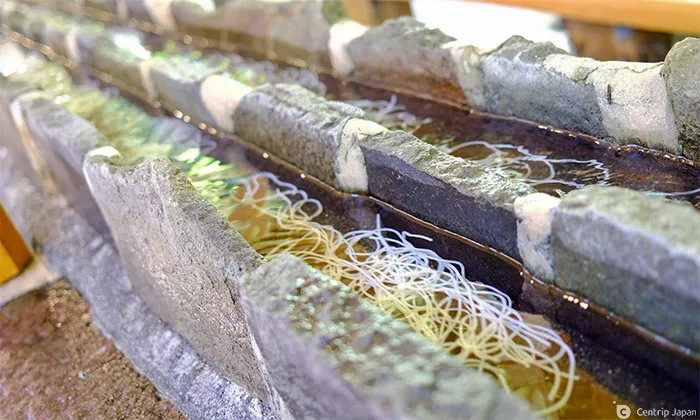 Somen noodles flowing through a stone channel
Somen noodles flowing through a stone channel
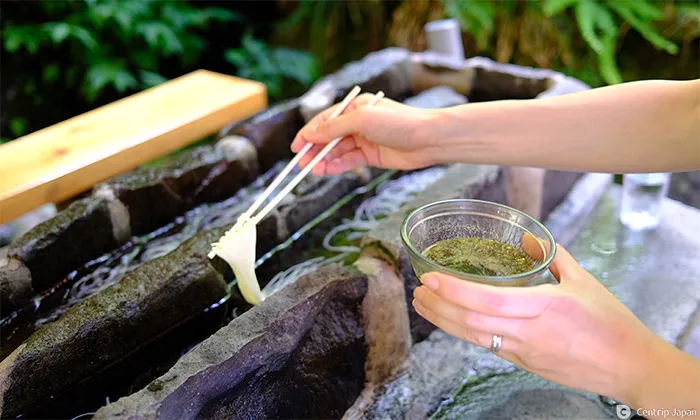 Scoop it up with chopsticks and eat
Scoop it up with chopsticks and eat
Aside from the debate over the origin, there is no doubt that this Amidagatakiso Restaurant is the best place to enjoy this summer food experience.
Traditionally nagashi somen is served in a bamboo tube, but at Amidagatakiso Restaurant the somen stand is made of thin stone slabs. Natural spring water flows over the cold stones, cooling the noodles even further.
According to the owner, Hisahiko Endo, the best way to enjoy the noodles is to scoop up the cold noodles and eat them right away. On the day of our visit, it was over 30 degrees Celsius in the city, but the air around the stone was cool, and we could enjoy our lunch without breaking a sweat.
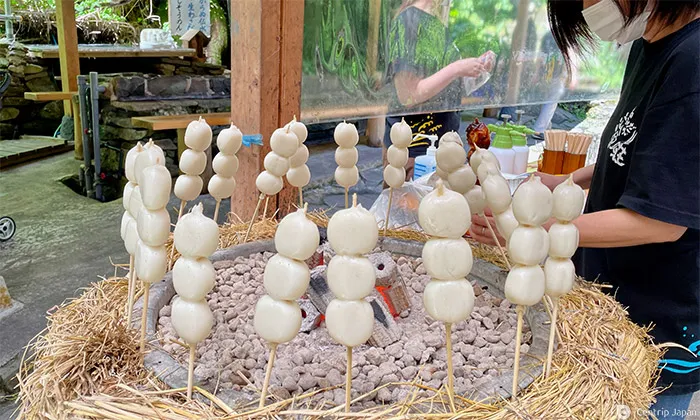 Dumplings roasted over charcoal
Dumplings roasted over charcoal
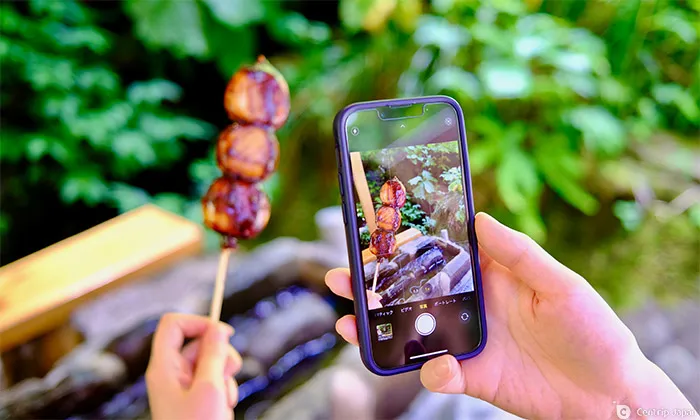 Instagrammable dumplings coated with miso
Instagrammable dumplings coated with miso
At Amidagatakiso Restaurant, you can order nagashi somen and dumplings grilled over charcoal (¥300 per dumpling) and grilled char (¥600 per fish), a specialty of the area. Surrounded by a deep forest while listening to the sound of water flowing from the waterfall made this a perfect experience.
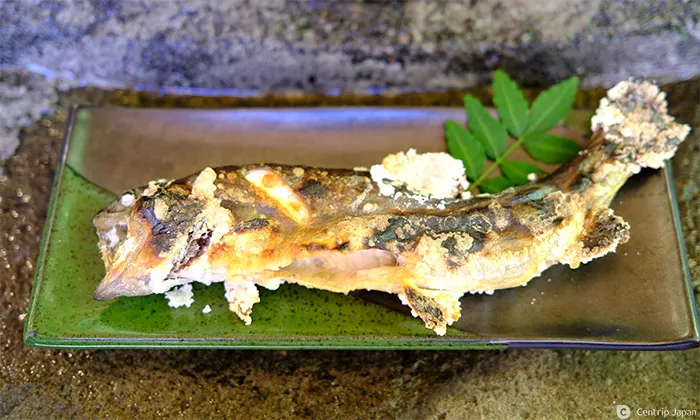 Grilled salted char caught in the Nagara River
Grilled salted char caught in the Nagara River
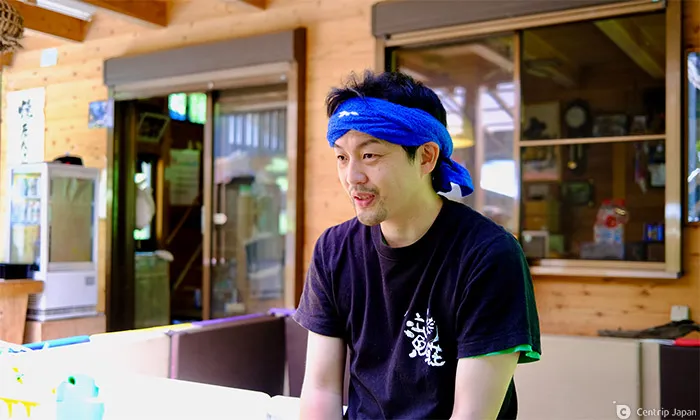 Mr. Endo, the second-generation owner of the restaurant
Mr. Endo, the second-generation owner of the restaurant
Amidagatakiso Restaurant is open from May to September each year from 10 am to 5 pm (last orders taken at 4:00 pm), but this is subject to change depending on weather and other conditions. For just ¥850 per adult (¥600 for elementary school students and younger), you can indulge in unlimited servings of somen noodles with one cup of mentsuyu dipping sauce. There's no time limit for your feast, but please be aware that you'll be seated together with other guests. The restaurant is very famous so expect long waits on weekends. We recommend allowing for extra time for your visit.
Hiking to Amidaga Falls
Now it’s time to work off those carbs and try a short hike to Amidaga Falls in Shirotori-cho.
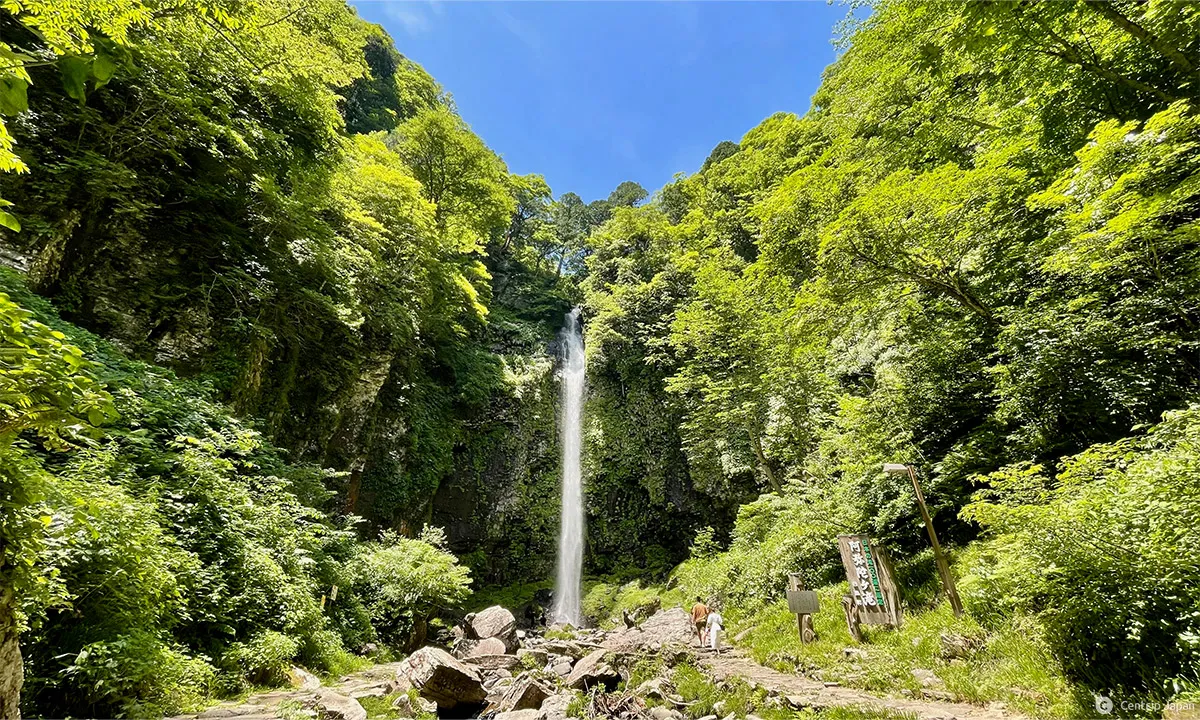 Amidaga Falls with a drop of 60 meters
Amidaga Falls with a drop of 60 meters
It is a 10-minute walk from the back of Amidagatakiso to Amidaga Falls. Amidaga Falls is about 60 meters high and is known as one of the largest and most famous waterfalls. Watching the water as if poured straight out of the beautiful blue sky is spectacular.
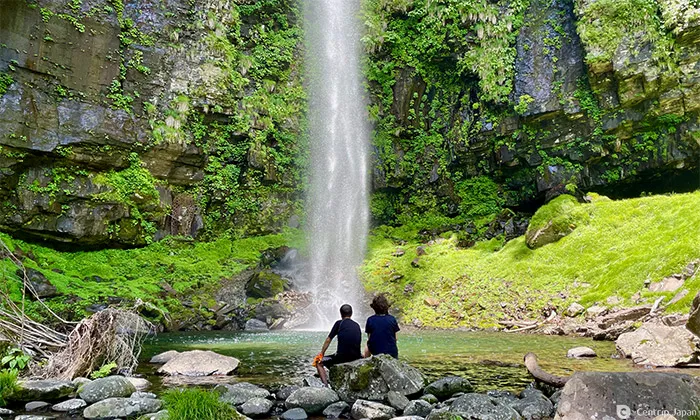 A couple cooling off in a waterfall basin
A couple cooling off in a waterfall basin
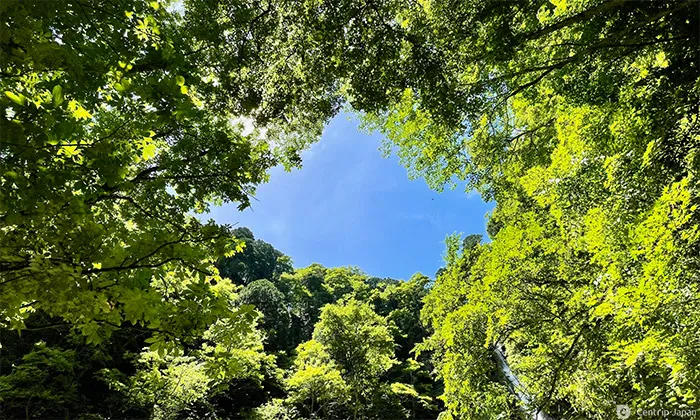 Verdant greenery surrounds the waterfall
Verdant greenery surrounds the waterfall
The mists created by the falling water filling the round the waterfall basin can cool you even in mid-summer. And the deep greens of the foliage overhead create an intimate atmosphere where you come into contact with the power of nature.
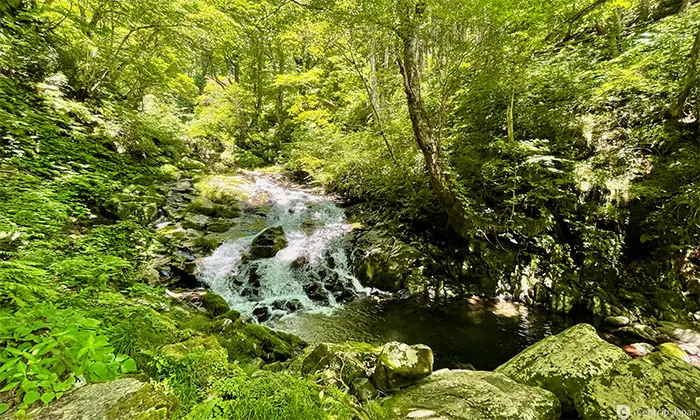 Clear water flowing from the waterfall basin
Clear water flowing from the waterfall basin
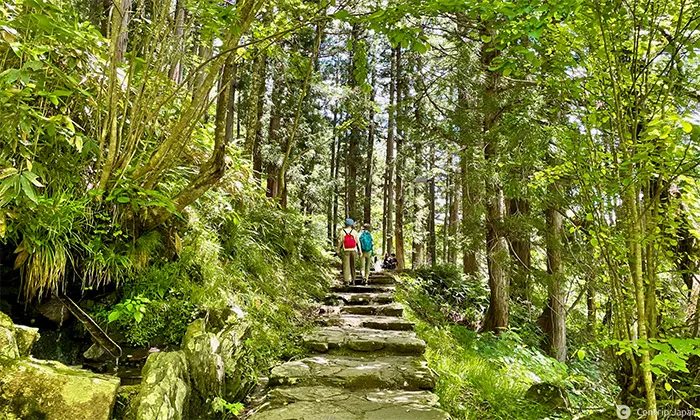 Well-maintained hiking trails
Well-maintained hiking trails
The falls are close to the restaurant, so stay parked and head off to Amidaga Falls. The path from the parking lot (or from Amidagatakiso Restaurant) to the waterfall is well maintained, and the slope is gentle, making it an easy hike.
Directions From Nagoya to Amidaga Falls and Nagaragawa Railway
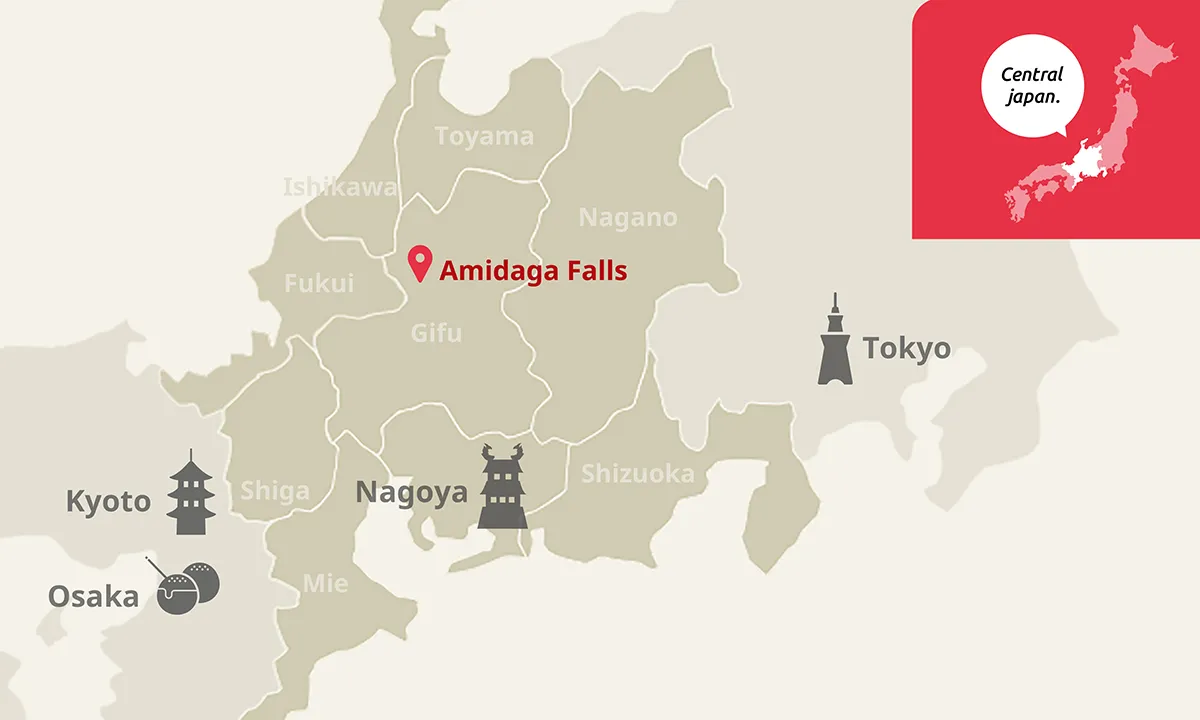
We recommend visitors drive to Amidaga Falls from Nagoya because it is far from the nearest station and other tourist attractions. From the Nagoya IC, take the Tokai-Hokuriku Expressway via Ichinomiya JC, exit at the Shirotori IC, and drive for 30 minutes.
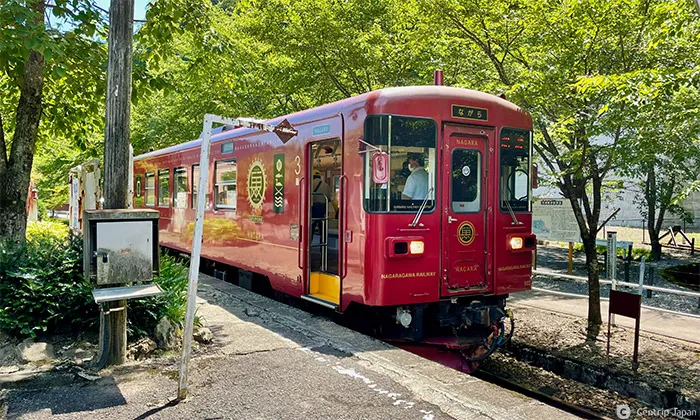 Nagaragawa Railway arrives at Hokuno Station
Nagaragawa Railway arrives at Hokuno Station
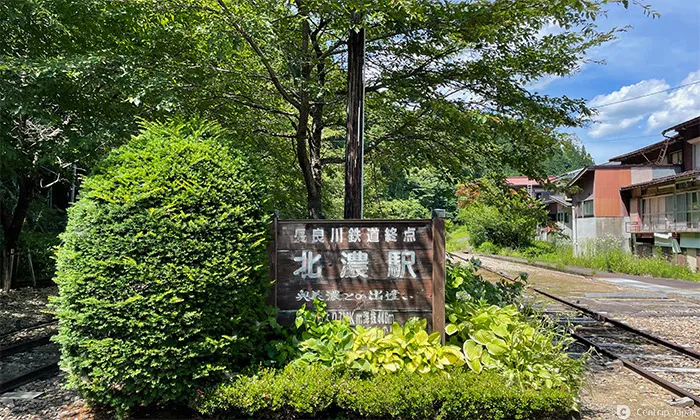 The station is the last stop on the Nagara River Railway
The station is the last stop on the Nagara River Railway
Another option is the quaint and charming train of the Nagaragawa Railway. While the terminal station is far from Amidaga falls, the scenic route makes this train easy to recommend. The Nagaragawa Railway is a red train with only one car that passes through the countryside. It is popular for its old-timey atmosphere, and some travelers make the trip just to ride the train.
Hakusan Mountain Worship Facilities
In addition to Amidaga Falls, Shirotori-cho is an influential place of worship of Mt. Hakusan, a sacred mountain. The name Shirotori comes from a legend of a swan guiding a priest. During the Edo Period (1603-1867), people seeking to reach the summit of Mt. Hakusan crowded Shirotori-cho.
Many of the facilities associated with the mystical Hakusan faith are photogenic. If you drive to Amidaga Falls, check these places out.
Hakusan Cultural Museum
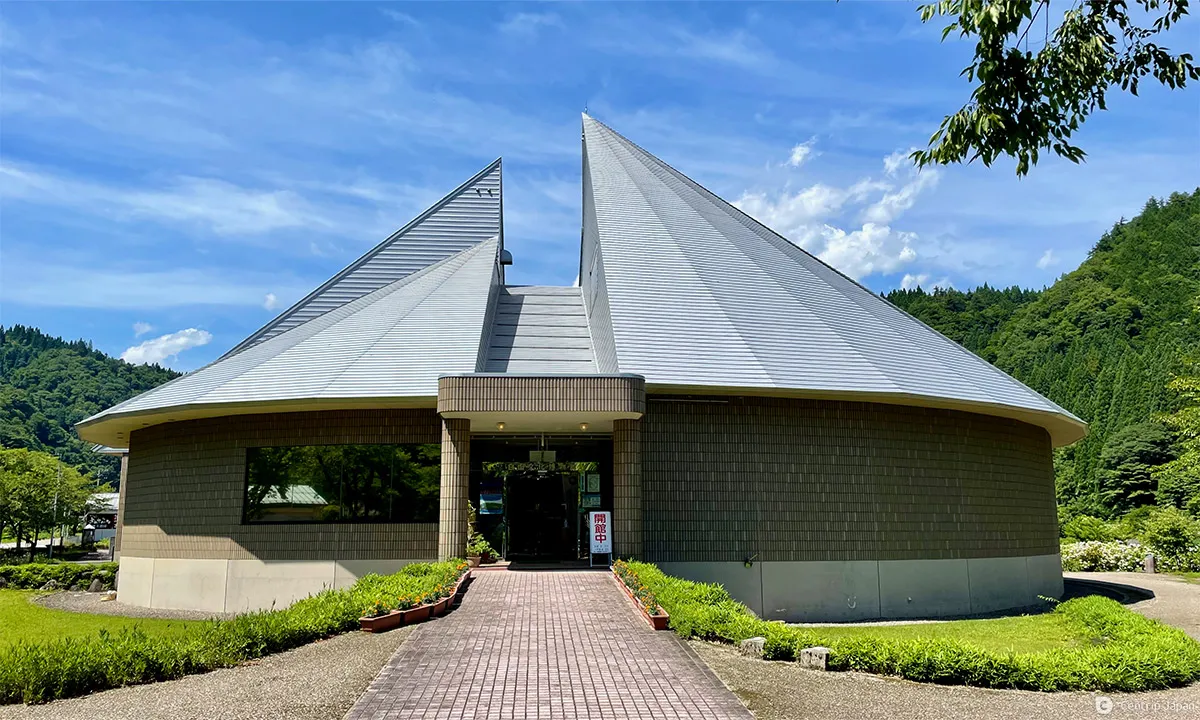 Roof in the shape of the three peaks of Mt. Hakusan
Roof in the shape of the three peaks of Mt. Hakusan
To start, the Hakusan Cultural Museum is the best place to understand the Hakusan faith. Although there are few multilingual displays, the photo panels and exhibits give visitors a sense of the local culture. The museum also displays the valuable collection of the Nagataki Hakusan Shrine, described below. The museum building itself is also unique, with its roof resembling the three peaks of Hakusan. Hakusan, including the bridge over the stream in front of it.
Nagataki Hakusan Shrine and Choryuji Temple
 The main shrine of Nagataki Hakusan Shrine
The main shrine of Nagataki Hakusan Shrine
Nagataki Hakusan Shrine is near the Hakusan Culture Museum.
The Hakusan faith has a broad base, with nearly 3,000 shrines in Japan. One of the central shrines of Hakusan worship is the Nagataki Hakusan Shrine. The town of Shirotori formed as the gateway to this shrine.
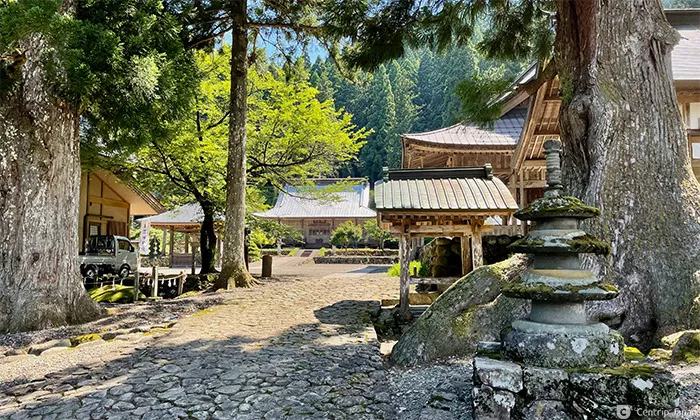 The approach to the shrine and the temple
The approach to the shrine and the temple
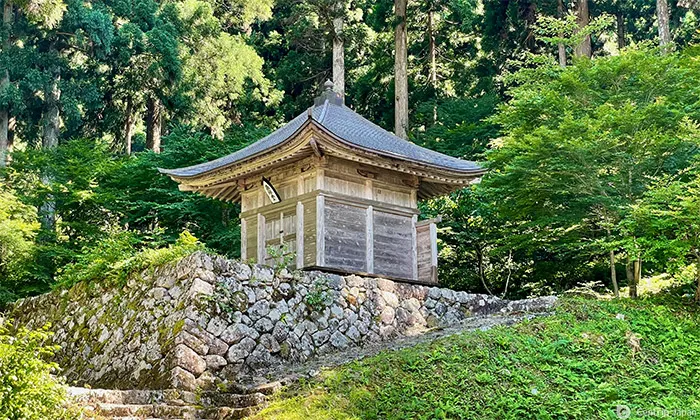 A hall standing in the precincts of the temple
A hall standing in the precincts of the temple
As Japan modernized, Shintoism and Buddhism were encouraged to separate for a time which is why Nagataki Hakusan Shrine and Choryuji Temple are separate but on the same grounds.
Hakusan Nakai Shrine
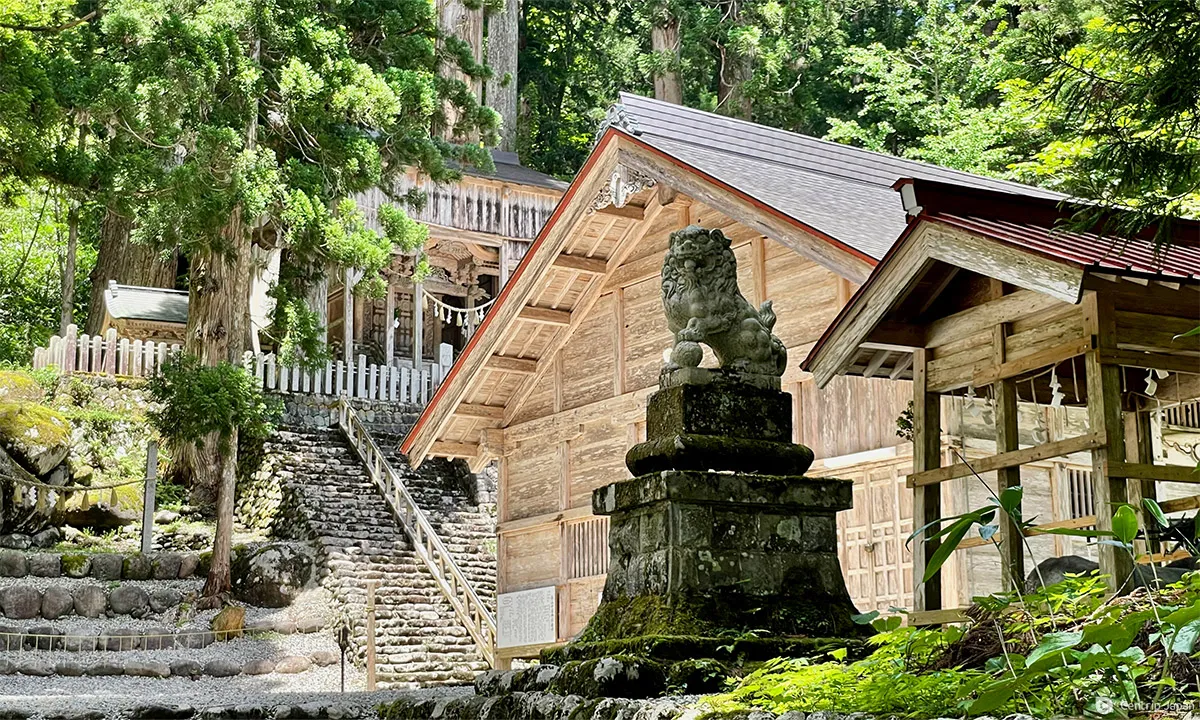 The main shrine of Hakusan Nakai Shrine (the building in the back)
The main shrine of Hakusan Nakai Shrine (the building in the back)
Hakusan Nakai Shrine is located between Hakusan and Nagataki Hakusan shrines. This shrine is also an important center of Hakusan worship, and its spacious grounds are lined with large cedar trees several hundred years old. After passing through the torii gate, the path leading to the main shrine is marked by a bridge, indicating that the area beyond is a sacred space.
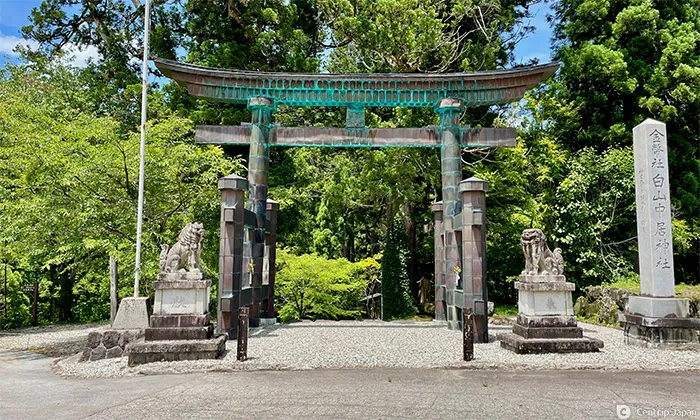 Beautiful greenish-blue torii gate
Beautiful greenish-blue torii gate
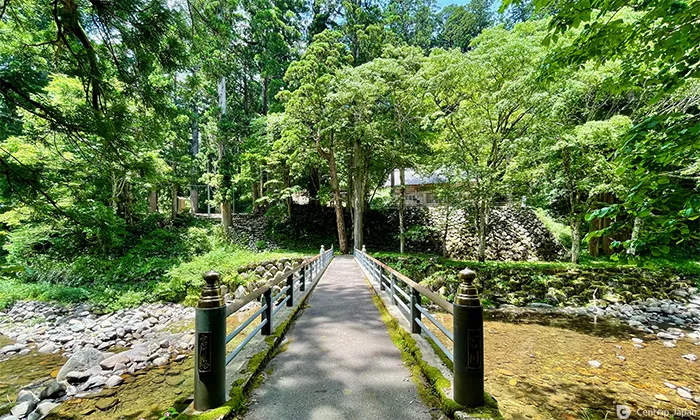 Bridge over the clear Miya River
Bridge over the clear Miya River
Magnificent Views of Shogahora Terraced Rice Paddies
There is one more place that you should stop by when you visit Amidaga Falls.
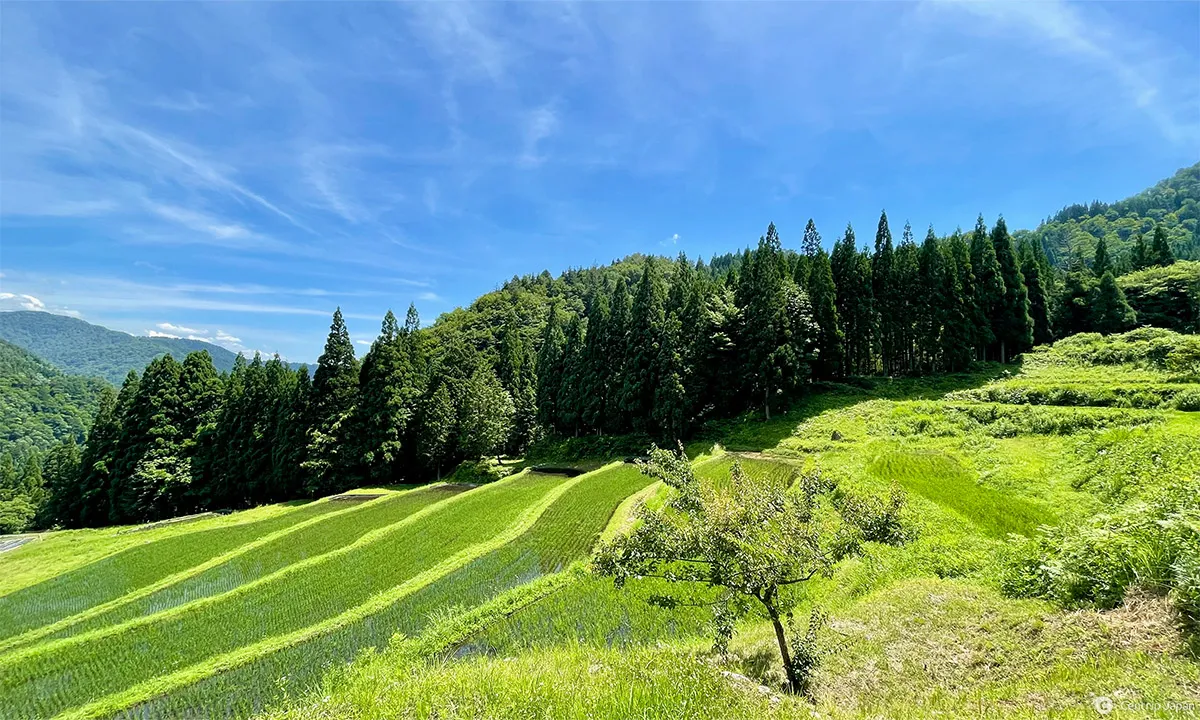 A view of terraced rice paddies where rice planting has just been completed
A view of terraced rice paddies where rice planting has just been completed
The beautiful terraced rice paddies, called Shogahora terraced rice paddies, are made by piling stones on steep mountain slopes. The terraced rice fields are a testament to the ingenuity of previous generations who tackled rice cultivation in the harsh mountain environment.
 Selected as one of the 21 best-terraced rice paddies in Gifu
Selected as one of the 21 best-terraced rice paddies in Gifu
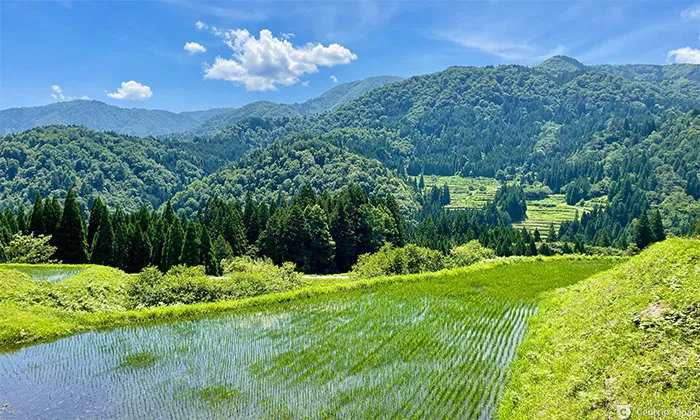 Shogahora terraced rice paddies viewed from a view spot
Shogahora terraced rice paddies viewed from a view spot
Driving is challenging since you have to proceed along a narrow side road, but the reflection of the blue sky on the newly planted rice paddies was worth it for the impressive beauty of the scene.
Major tourist attractions in and around Shirotori-cho
Gujo Hachiman
Gujo Hachiman, famous for the Gujo Odori dance performed throughout the night on summer nights, is a must-visit destination. The castle town has clear water flowing along the streets. Visitors can also enjoy unique experiences such as making lifelike food samples and silk-screening original tenugui hand towels. It takes about 15 minutes from the Shirotori IC of the Tokai-Hokuriku Expressway to the Gujo Hachiman IC.
Related articles
Winter Sports in Gujo City
Shirotori-cho and the northern areas of Gujo City receive a large amount of good-quality snow, perfect for the many ski and snowboarding resorts in the area. There are many ski areas for beginners and families, making it a great place to enjoy the winter landscape and sports.
Hida Takayama and Shirakawa-go
Near Shirotori is the World Heritage Site Shirakawa-go and Hida Takayama, a popular destination for its old townscape. From the Shirotori IC to Shirakawa-go, take the Tokai-Hokuriku Expressway and get off at the Shirakawa-go IC. To reach Takayama, take the Chubu Jukan Expressway from the Hida Kiyomi IC of the Tokai-Hokuriku Expressway and get off at the Takayama Nishi IC. Both of these routes take about one hour to reach.
Related articles
Click here to get the latest information on Central Japan.Centrip Japan - Nagoya and Chubu Information

